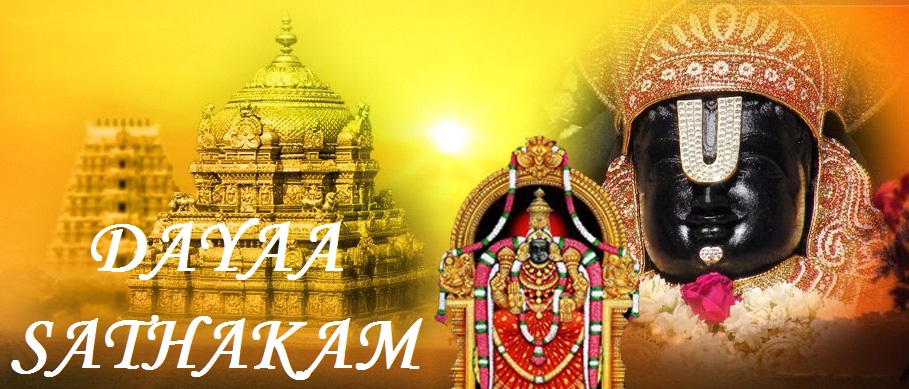bhava bhaya pariitaapachchhityai bhajannaghamarShaNam.h.
muShita kaluSho mukteragresarairabhi puuryate
svayam.h upanataiH svaatmaananda prabhR^ityanu bandhibhiH..76
(MEANING):
(MEANING):
Oh Dayaa Devi! You decided to destroy the many fears of SamsAram (Bhava bhaya pareetApam) and the ensuing sufferings of the Jeevans. For this purpose, You plunge the suffering ChEthanam in the ocean of bliss known as ThiruvEnkatamudayAn at Vrusha Giri (ThvayA Janthu: Vrusha Giri SudhA Sindhou nihitha:). There is a snAnam prescribed in the SaasthrAs named agamarshaNam. When one performs this type of SnAnam in the holy waters, his sins are destroyed thoroughly and the previous tApams are chased away.Similarly, the ChEthanam which was immersed in the blissful ocean of SrinivAsan by You gets its taapams and Paapams removed through the performance of the act of Prapatthi. Oh Dayaa DEvi! You are the one, who performs the Prapatthi for the chEthanam. Until the chEthanam can enjoy the MokshAnandham at the end of its life on earth, You bless the chEthanam to enjoy some viSEsha anubhavams here itself. Two such special anubhavamsare: (1) enjoyment of the Lord, who resides inside as AntharyAmi or indweller and (2)enjoyment of ArchAvathAra Moorthys and performing Kaimkaryams for them. You bless the Prapannan with many other visEsha anubhavams. These anubhavams here are like the retinue that goes ahead of the supreme MokshAnandham. How can one count the limitless upakArams that You perform for the Prapanna Jeevan ? It is impossible.

No comments:
Post a Comment